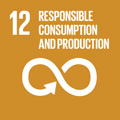- Docente: Vincenzo Tumiatti
- Credits: 6
- SSD: CHIM/08
- Language: English
- Teaching Mode: In-person learning (entirely or partially)
- Campus: Rimini
- Corso: Second cycle degree programme (LM) in Advanced Cosmetic Sciences (cod. 9225)
Learning outcomes
By the end of the course, the student should have a sufficient understanding of the molecular mechanisms of action of cosmetic bioactive compounds, and about the different kinds of bonds and steric factors involved in the interactions between the cosmetic bioactive compounds and the different biological targets. He should know the main chemical transformations, which can occur on these kinds of compounds by the metabolic reactions. He should be able to apply their knowledge to understand the chemical and physical properties, mechanisms of action, structure-activity relationships of different cosmetic bioactive compounds, which will be introduced and illustrated during the course.
Course contents
INTRODUCTION
Significance of cosmeceutical. Fake news and the scientific approach. Principles of pharmacokinetic: absorption, distribution, metabolism (Phase I and Phase II reactions), excretion of bioactive compounds and related pollution problems. Biological target interactions: description of different chemical bonds involved in, structures of the different targets and triggering of biological activity. Molecular mechanisms of bioactive compounds. Biological targets in skin: intracellular and membrane receptors, enzymes. Influence of steric factors on bioactive compounds activity: optical (chirality), geometric and conformational isomery.
SPECIFIC TOPICS
Oils: different types and main cosmeceutical ingredients
Flavonoids: different types and main cosmeceutical ingredients
Skin lightening agents
Skin Antioxidant agents
Skin Antinflammatory agents
Skin Antiaging agents
Microalgae in cosmetics
Peptides as cosmeticeuticals
Future perspectives in cosmeceuticals
Readings/Bibliography
Leslie Baumann, Cosmeceuticals and Cosmetic Ingredients, Mc Graw Hill Education, 2015, ISBN: 978-0-07-179398-8
Zoe Diana Draelos, Cosmeceuticals, Elsevier, 2016, ISBN: 978-0-323-29869-8
M. Varinia Michalun, Joseph C. Dinardo, Milady Dictionary, Cengage Learning, 2015, ISBN: 978-1-285-06079-8
Copy of the slides will be available on IOL web site of the course
Teaching methods
During the lessons all the different topics reported in the main program will be treated. A special lesson will be performed in the informatic laboratory about the different approaches on the literature research.
Assessment methods
At the end of the course each student is invited to display a short report about a possible cosmetic formulation, based on the bioactive compounds present in the scientific literature.
The final score is based on the goodness of the report and on the student's ability to answer the questions asked by the teacher during the exhibition and related to the topics covered during the course.
Registration on-line on AlmaEsami is mandatory.
Teaching tools
All the teaching program wiil be explained by PC power point presentation.
Office hours
See the website of Vincenzo Tumiatti
SDGs


This teaching activity contributes to the achievement of the Sustainable Development Goals of the UN 2030 Agenda.
